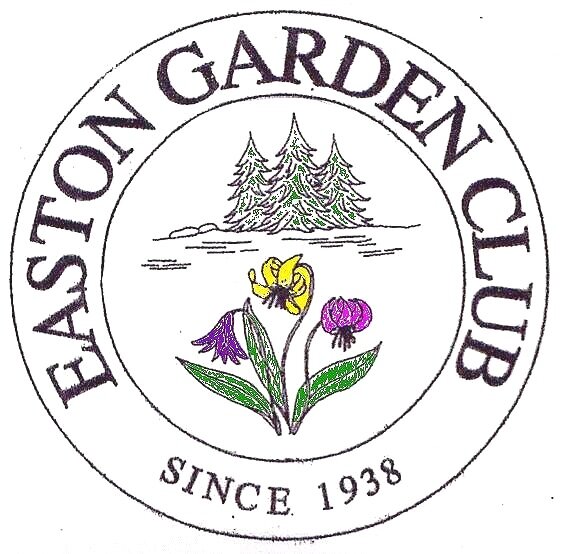
Bluebird Conservation Project
Join us in helping our Bluebird population thrive. Consider installing a Bluebird Nesting Box in your landscape. February is a great time to get started!
Click on the DEEP Bluebird Conservation Fact Sheet button to learn about Bluebirds, how to create a habitat to support, including positioning of nesting boxes to provide shelter and the North American Bluebird Association for fact sheets and nesting designs. ,
How to get started!
Awareness - learn about the Bluebirds
Create Habitat: Planting to support Bluebird - scroll down for a planting list. Winter is a great time to get started on adding natives to the landscape to support pollinators and our native food web
Install nesting boxes for protection and learn how to care for them - scroll down for predator id
Keep a Nesting Box Journal! A journal provides information on when eggs are expected to hatch, when young are likely to make their first flights, and why a problem may have developed with the nestlings. Keep records in a way that makes sense to you and is easy to complete. DEEP suggestions:
Date: time and weather conditions
Nest: type, materials used, date started, date completed, height of nest
Eggs: number, date first egg laid, date last egg laid
Young: number, hatch date, age (hatch date = day 1), condition
Parasites: type, any control measures taken
Fledglings: number, date
Comments: any observations of interest, such as competitors, predation problems, banding information, behavioral notes
Connect with other conservation enthusiasts or Join the Easton Garden Club
Also consider visiting our local CT Audubon location on Burr Road in Fairfield for supplies and to purchase a readymade Bluebird House. Last month they donated a Bluebird house which one of our members took home to install!
Scroll Down for excerpts from the DEEP Bluebird Conservation Fact Sheet & NABS Fact Sheets
Quick Guide to Nest Identification
Bluebird: a neat nest of fine grasses or pine needles.
Tree swallow: a nest of grasses lined with feathers.
Black-capped chickadee or tufted titmouse: a downy nest of mosses, fur, and soft plant fibers.
House wren: a messy nest of twigs, occasionally lined with finer fibers.
House sparrow: a messy nest made of what ever they can find: grasses, cloth, feathers, twigs, leaves, and possibly liter
What Else Can You Do to Help?
Learn to recognize the nest and eggs of the house sparrow and remove them from your nest box. House sparrow nests, eggs, adults, and young are not protected by law and may be legally removed or destroyed. It may take many weeks of removal to discourage house sparrows from using your bluebird box.
A house sparrow nest is very sloppy. It is made of coarse grass, rootlets, leaves, straw, and possibly bits of cloth and litter, which fill the cavity. It often has a domed roof when built in a nest box and may vary in size. The three to seven eggs are oval and white, gray or greenish, with irregular, brown speckles.
Plant native trees, shrubs, and vines that will provide fall and winter food for bluebirds.
The following are some bluebird favorites:
Trees
American Mountain Ash (Sorbus americana)
Shadbush (Amelanchier canadensis)
Flowering Dogwood (Cornus florida)
Alternate-leaf Dogwood (Cornus alternifolia)
American Holly (Ilex opaca)
Shrubs
Highbush Cranberry (Viburnum trilobum)
Gray Dogwood (Cornus racemosa)
Silky Dogwood (Cornus amomum)
Red-osier (red-stemmed) Dogwood (Cornus stolonifera)
Smooth Sumac (Rhus glabra)
Staghorn Sumac (Rhus typhina)
Vines
Virginia Creeper (Parthenocissus quinquefolia) Note: aggressive spreader - requires
Grape (Vitus spp.) Note: aggressive spreader
Supplemental Feeding of Mealworms: The North American Bluebird Society ( NABS) suggests that mealworms make a great supplemental food source for Bluebirds.
Actually, Mealworms are not really worms at all. They are the larval form of the darkling beetle (Tenebrio molitor). They are a nutritious food supplement relished by bluebirds. They are clean and easy to keep in a worm bin (and as gardeners we relish our worm castings…).
Here are some tips from the NABS facts sheet on why Mealworms are offered to bluebirds:
• Help entice them to use a nesting box
• Act as supplementary food for nestlings if food becomes scarce—e.g., when weather conditions prevent the parents from finding insects
• Help birds survive during spells of severe weather
Important note: According to NABS, because they do not provide complete nutrition, mealworms should be used as a supplemental food only. They are calcium depleting, which can leave young birds with weak bones or cause egg binding in laying birds. To counter this, put the mealworms in a plastic bag with calcium carbonate or calcium citrate powder, and shake it gently to coat them. Both forms of calcium are available at health food stores or online. Offer mealworms in limited quantities just once or twice a day unless poor weather conditions dictate more frequent feeding. A hundred or so worms offered morning and evening would be more than adequate for a pair with a box of nestlings. Using the Conservation Project contact form, ask Jean where she buys her mealworms - for people raising Chickens, they love mealworms!

